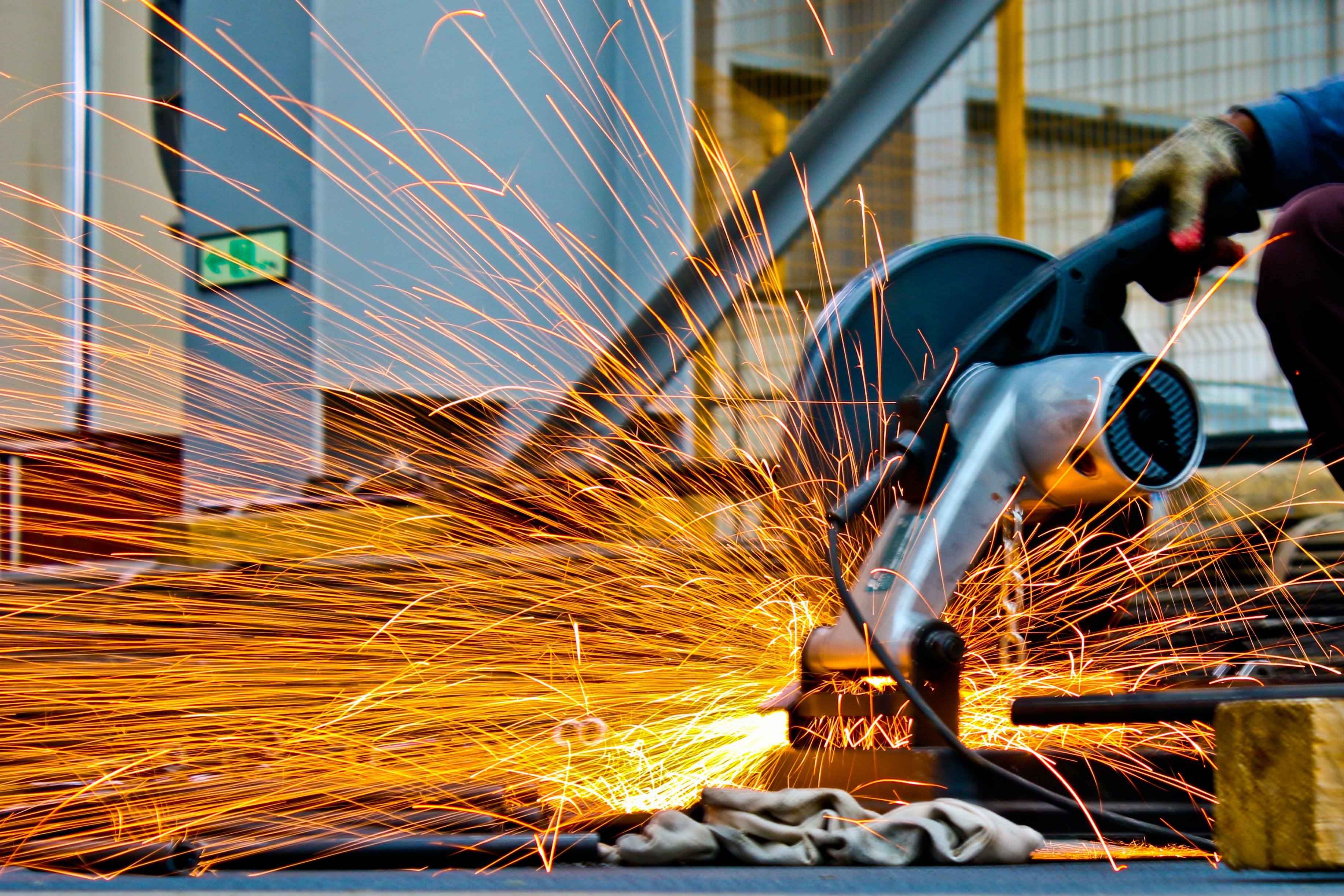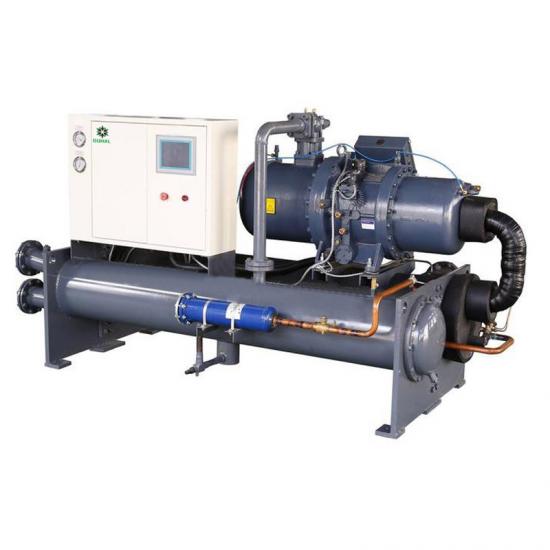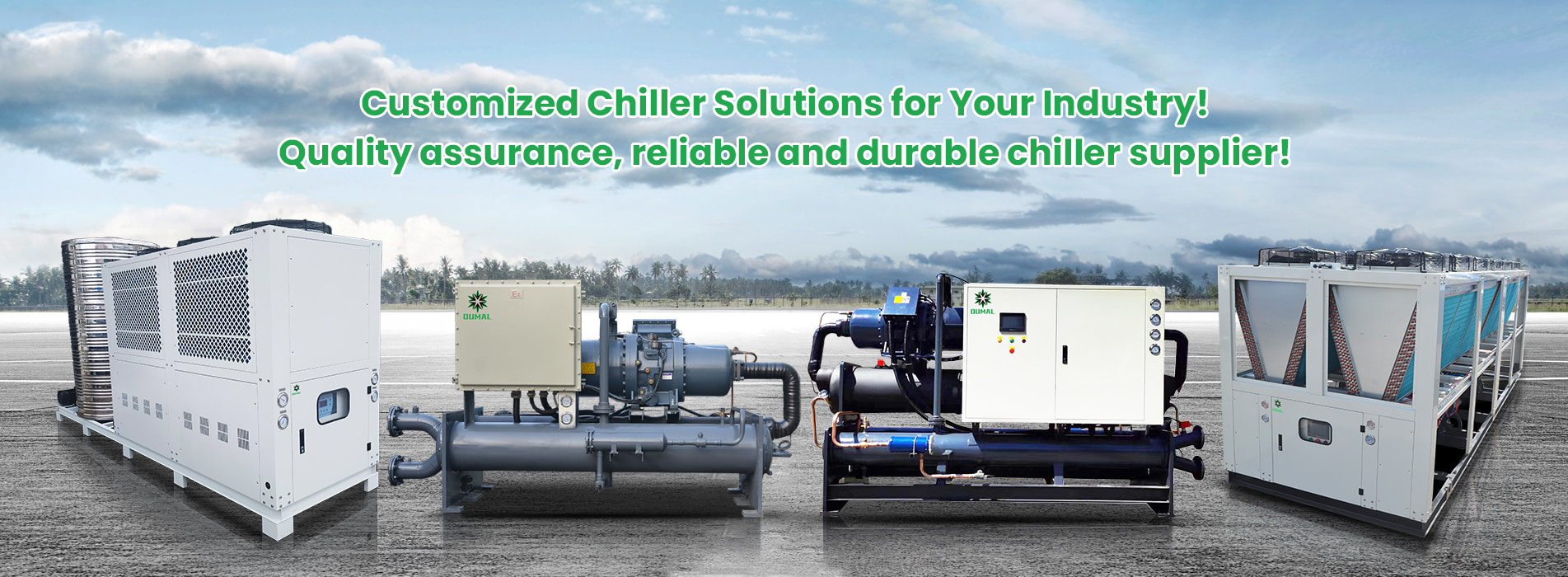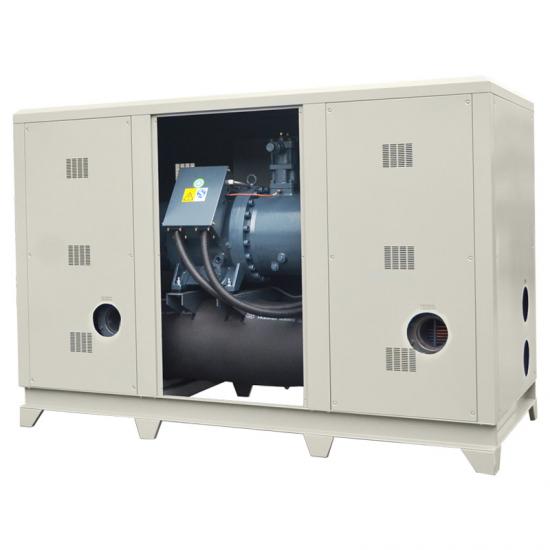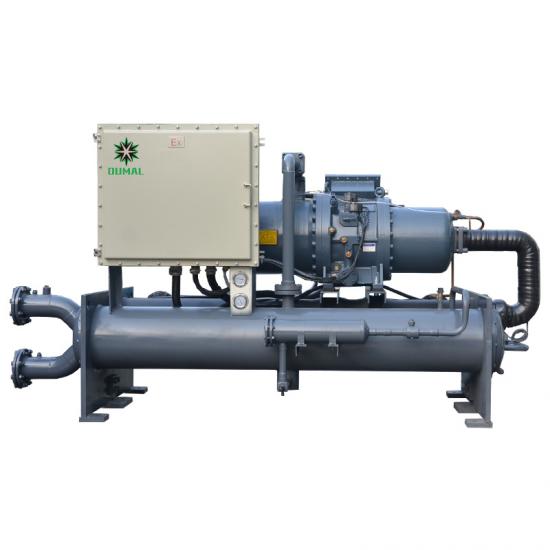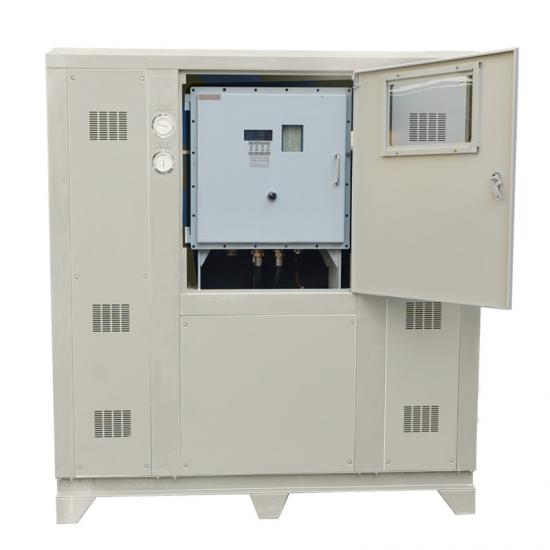You want a cooling system that works well and helps the planet. The 100 ton air cooled chiller cools big areas easily. It uses energy in a smart way. EER and COP show how well it turns power into cool air. Many companies use the 100 ton air cooled chiller because it works every day. The 100 ton air cooled chiller is quiet and simple to take care of. It is made to last a long time.
100 Ton Air Cooled Chiller Features
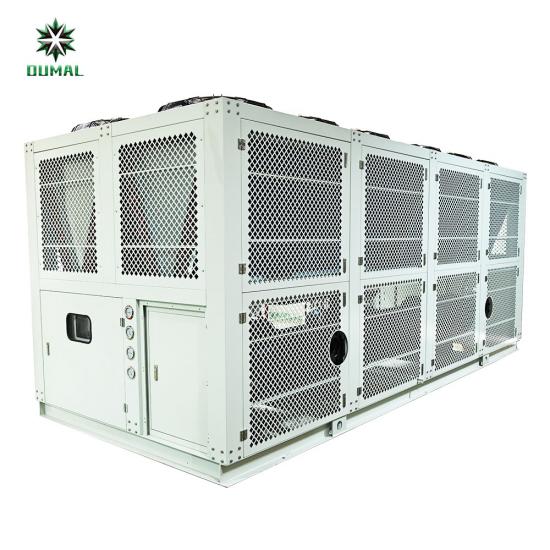
Twin-Screw Compressors
You want your chiller to give strong cooling all the time. The OUMALCHILLER 100 ton air cooled chiller uses twin-screw compressors. These compressors make sure you get lots of cooling and smooth running. Twin-screw compressors work great in hard industrial places. They help your system shake less and wear out slower. This design lets your air cooled chillers last longer and break down less. Most air cooled chillers with strong build can work for 15 to 20 years. If you do regular check-ups, your chiller can last even longer.
Advanced Cooling Fan
The ebmpapst cooling fan in this chiller is quiet and works well. You will hear less noise than with other air cooled chillers.
-
Most air cooled chillers make 70 to 90 dB(A) of sound at 30 feet.
-
For quiet places, you can pick models with sound below 75 dBA at 16.4 feet.
This special fan helps make your work area quieter. It also saves energy by moving air well over the coils. You get strong cooling without loud sounds or wasted power.
Intelligent Control System
You want a chiller that is simple to use and keeps things safe. The Siemens PLC intelligent control system gives you easy control.
Here is what you get:
| Feature | Description |
| Control System | Siemens PLC controller |
| User Interface | Touch screen for easy use |
| Protection Mechanisms | Many controls to keep the system and compressor safe |
| Control Logic | PID logic to manage compressor load |
| Operational Stability | Controls expansion valve and fan for steady work |
| Anti-Frost Control | Picks anti-frost mode by itself |
| Compatibility | Works with BMS systems |
This smart system lets you watch and change your air cooled chillers easily. You can keep your cooling steady and safe. The easy design makes fixing and cleaning simple. Removable panels and a stainless steel water tray help you clean and fix the chiller fast. Air cooled chillers need coil cleaning during the cooling season, but you do not need to treat water like with water-cooled systems.
Tip: If you do regular check-ups, your air cooled chillers will last longer and work better. You will save time and money later.
Benefits for Industrial Cooling
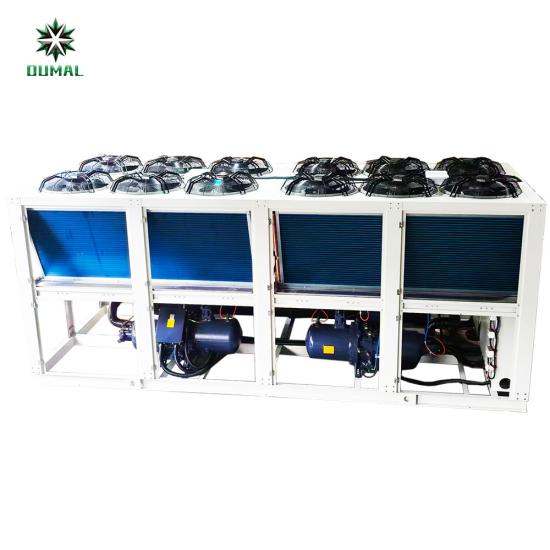
High Cooling Capacity
You need a cooling system that can handle big jobs. The 100 ton air cooled chiller gives you strong cooling for many types of factories. You can use it in plastics, electronics, or food production. This chiller works well even when your machines run all day. Here is a table that shows how much cooling you get:
| Cooling Capacity Type | Value |
| Nominal Cooling Capacity | 292,400 kcal/h |
| Nominal Cooling Capacity | 340 kW |
This high cooling capacity means you can keep your equipment safe and your products at the right temperature. Even when the weather gets hot, the chiller keeps working. If you use special evaporative cooling, you can save up to 20% more power and make the chiller work even better when it is hot outside.
Energy Efficiency
You want to save power and money. The 100 ton air cooled chiller uses less energy than older systems. Here is what you can expect:
-
The old chiller uses 1,378 kWh each day.
-
The new chiller uses only 980 kWh each day.
-
You save 398 kWh every day.
-
In one year, you save 103,480 kWh if you run the chiller five days a week.
The chiller also has a high coefficient of performance (COP). For chillers bigger than 50 kW, the COP is not less than 2.60. This means you get more cooling for every unit of power you use. You help the environment and lower your bills at the same time.
Reliability
You need reliable operation in your factory. The 100 ton air cooled chiller gives you steady cooling every day. It uses strong parts like twin-screw compressors and a tough steel frame. You can trust it to work in hard places and different weather. The chiller meets important standards like ASHRAE 90.1, IECC, and AHRI Certification. These standards show that the chiller is safe, tested, and ready for your needs.
Note: Air cooled chillers help you follow government rules about energy use and emissions. You can lower your costs and meet all the latest laws.
Low Maintenance
You want a chiller that is easy to take care of. The 100 ton air cooled chiller has smart features that make maintenance simple. You can open panels quickly and clean the coils without trouble. Here is a table that shows what you need to do and when:
| Maintenance Interval | Tasks |
| Daily | Check refrigerant pressure, temperature of chilled and condenser water, and look for leaks. |
| Weekly | Inspect oil level in the compressor and clean or replace air filters. |
| Monthly | Inspect electrical connections, check belts and pulleys for wear. |
| Quarterly | Clean condenser coils and check refrigerant charge. |
| Annual | Full-scale inspection by a professional technician, including performance checks and calibrations. |
Regular checks help you stop problems before they start. You can keep a daily log of pressure and temperature. This helps you find small issues early and avoid downtime. The chiller also uses air to cool, so you do not need much water. This saves water and lowers your costs. Air cooled chillers work well in places where water is hard to find.
| System Type | Water Consumption | Energy Efficiency | Notes |
| Air-Cooled Chillers | Low | High | Ideal for areas with limited water resources. |
| Water-Cooled Chillers | High | Variable | Requires significant water for evaporative cooling, less efficient in water-scarce regions. |
You help the planet by using less water and energy. The chiller meets eco-friendly standards, so you know you are making a smart choice for your business and the environment.
Applications and Flexibility
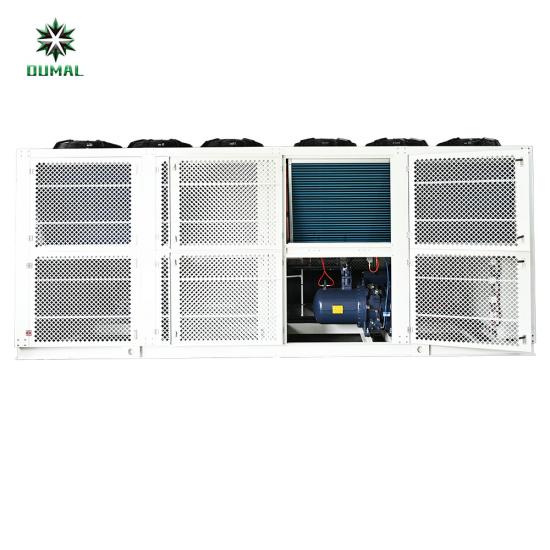
Versatile Use Cases
A 100 ton air cooled chiller works in many industries. This chiller can handle different places and temperatures. It gives you good temperature control. This helps your machines work well and last longer. The chiller saves energy because it does not cool too much.
-
Your products stay at the right temperature.
-
You make better products and waste less.
-
You spend less money and get more work done.
Many businesses use this chiller. Here are some ways people use it:
|
Industry/Application |
|---|
|
|
Plastic injection molding
Food processing
Pharmaceutical production
Medical device manufacturing
Power generation plants
Commercial printing
Metal finishing
Laser cutting
Machine tooling and die-cutting
Semi-conductors
This chiller keeps your equipment safe. It helps your work go smoothly, even if it gets hot or cold.
Easy Installation
You want a chiller that fits your space. The 100 ton air cooled chiller is small and easy to place. You can put it in tight spots or small rooms. The modular design makes fixing and upgrading easy.
| Feature | Description |
| Compact Footprint | Good for small spaces and close setups. |
| Modular Design | Easy to fix or change without needing lots of room. |
You can pick from many options to fit your needs:
| Customizable Options | Description |
| Special paints and colors | Pick the color you like |
| Outdoor installation packages | Use it outside |
| Special temperature controllers | Choose digital or analog controls |
| Special instrumentation | Add more tools to check the chiller |
| Mounting clips or casters | Makes moving and setting up easier |
| Remote switching | Run the chiller from far away |
| Large/small tanks or no tank | Pick the tank size or use no tank |
| Arranged for once-through cooling | Use for direct cooling jobs |
| Additional safety switches | Add more safety parts |
You also get a strong warranty for peace of mind:
| Warranty Duration | Coverage | Additional Notes |
| 1 year | Parts and labor | Free check-up in the second year |
This chiller is easy to install, simple to upgrade, and comes with good support.
You want a cooling system that is easy to put in. It should work well and not break down often. The 100 ton air cooled chiller is a good choice for many businesses because it gives you:
-
Easy setup and simple care
-
Strong cooling for big jobs
-
Good performance where water is hard to get
-
Can fit in many places in your building
| Feature | Benefit for Sustainability |
| Improved energy efficiency | Uses less power and helps green plans |
| Lower environmental impact | Has refrigerants that are better for Earth |
This chiller helps your business run well. It also helps you reach your green goals.
